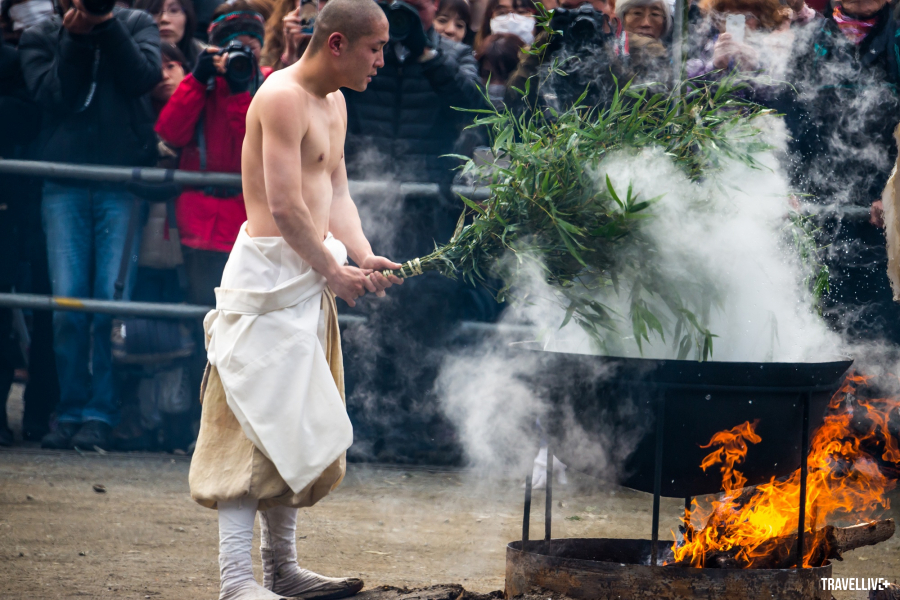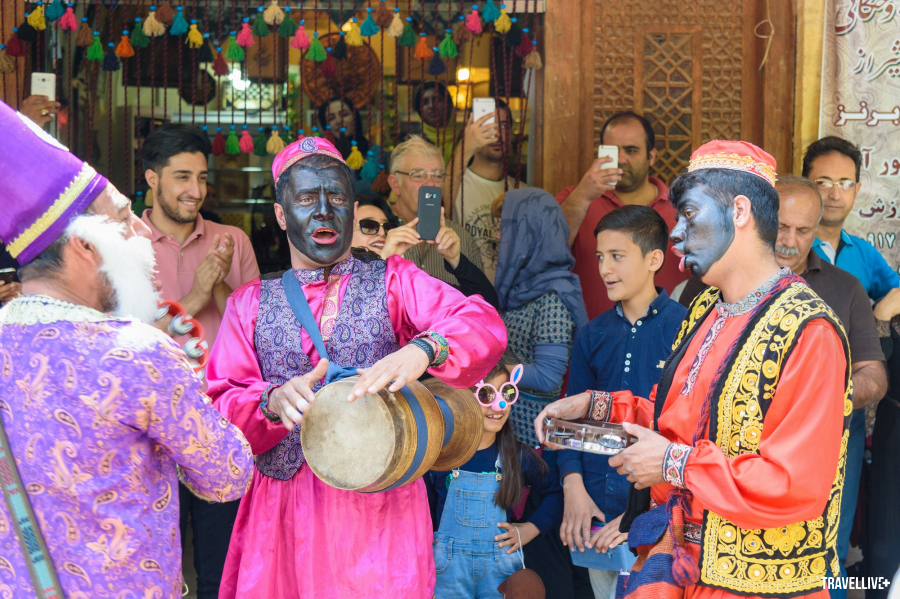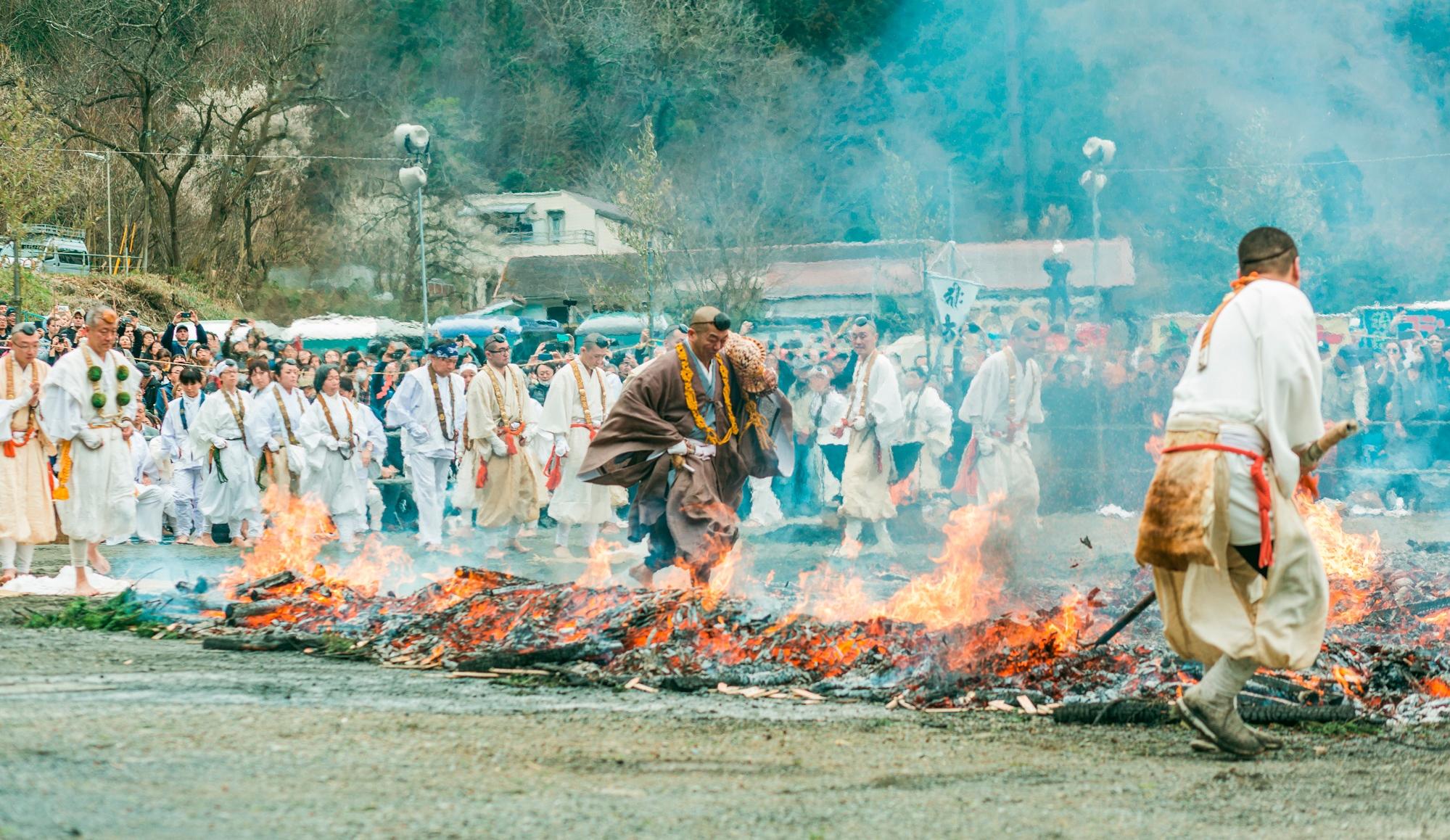Walking barefoot through hot ashes - Japan
This is an experience that visitors can try when participating in the Hiwatari-matsuri spring festival which takes place in early March every year at Yuki-ji Temple on Mount Takao, west of Tokyo (Japan). This is a festival of followers of the Shugendo sect - a unique religion that believes in Buddhism combined with human asceticism. Fire is used by Shugendo followers as a ritual to ward off evil and also as a method to train will and spirit every day.

During the festival, believers set up a pyre to burn the symbols of evil, then perform the Goma ritual: holding a sacred amulet, walking barefoot through the red-hot coals and hot ashes with the wish to avoid bad luck, receive good luck, health as well as pray for world peace. After the ritual ends, visitors can participate by taking off their shoes and walking barefoot through the ashes to purify the bad luck of the old year.
Festival of effigies and red fire - Spain
Taking place from March 1 to March 20 every year, Las Fallas is the largest festival in the Mediterranean region, held in Valencia (Spain) to welcome spring and honor Saint Joseph. The highlight of Las Fallas is the parade of "ninots" (effigies) 6-10 m high made by locals from paper, wax and wood. Thousands of people gather around Plaza del Ayuntamiento to witness the earth-shaking "Mascletà" fireworks display at 2:00 p.m. every day. On the final night of the festival (March 19), the ninots will be burned one by one as a ritual to dispel the cold winter and welcome the warm spring. And at exactly 00:30, the effigy that won first prize in the festival will be set on fire in front of the city's largest building, making the entire night sky of Valencia light up in flames.

Having gone through many ups and downs since the 18th century, Las Fallas has now become the pride of the people of Valencia and Spain. In 2016, Las Fallas was recognized by UNESCO as an Intangible Cultural Heritage.
Nowruz - Middle East
Celebrated for over 3,000 years in Iran and other countries of the former Persian empire, spanning from the Middle East to Central Asia, Nowruz is also known as the Persian New Year. Nowruz marks the first day of spring and the start of the new year according to the Hijrin Islamic calendar - the official calendar of Iran and Afghanistan. Preparations for Nowruz begin in March with the sowing of beans and wheat to ensure a good harvest. After the sowing ceremony, the house is cleaned and new clothes, food and decorations are purchased.

During the holidays, every family decorates a Haft Sin table with seven items starting with the letter S including: Sabzeh (wheat and barley grains planted in a plate, symbolizing rebirth), Samanu (sweet cakes made from young wheat, symbolizing abundance), Senjed (dried bitter loquats, symbolizing love), Sir (garlic, symbolizing medicine), Sib (apple, symbolizing health and beauty), Somaq (sumac fruit, symbolizing the rising sun) and Serkeh (vinegar, symbolizing age and patience).

At the time of New Year's Eve, all family members will sit around the Haft Sin table, wear new clothes, hold coins for luck and exchange greetings, then visit relatives and loved ones. Visitors to Nowruz can participate in sacred rituals such as jumping over fires, carrying torches and dancing with the locals.
Explore Chichen Itza during the spring equinox - Mexico
The Chichen Itza Pyramid, located in the middle of the square of the city of Chichen Itza (Mexico), is one of the many masterpieces of the Mayan civilization and one of the seven new wonders of the world recognized in 2007. Chichen Itza has a 4-sided pyramid shape, built into 9 steps with a small square temple on top of the tower. Each side of the pyramid has a staircase running from the top to the bottom of the tower with 91 steps. The four sides of the tower will have a total of 364 steps (4 x 91), plus the temple on top is 365, exactly the number of days in a year according to the Gregorian calendar.

It is for this reason that Chichen Itza was used by the ancient Maya as a sundial. On the spring equinox (March 21) each year, the sunlight and shadows along the northern staircase merge with the serpent head at the base of the pyramid, creating the illusion of a giant snake sliding down from the heavens - the snake god Kukulcan, bringing hope and signaling the arrival of a new planting season. The same phenomenon occurs on the autumn equinox (September 21), but this time, Mexico is in the rainy season, so it is much harder to observe.
Tulip train ride - Netherlands
Every April, millions of tourists flock to Keukenhof Gardens in the Netherlands to see the colorful tulip fields. But not many people know that they can see the tulips by taking a train through the beautiful tulip fields. That train is the Nederlandse Spoorwegen, which runs from Haarlem to Leiden and is operated by the Dutch State Railways. This train runs daily, but during tulip season, the Nederlandse Spoorwegen becomes a special train.

Travelers can choose the intercity train with two stops or the local Sprinter train with four stops between the two cities to see the tulips in peace and quiet. At just over 30 minutes from Haarlem and costs from 12.40 EUR for a return ticket, visitors have a very special experience with the best train experience in the brilliant spring journeys.

































